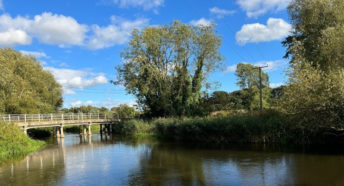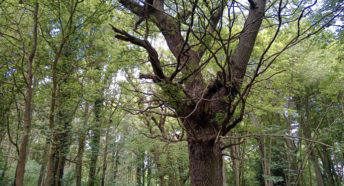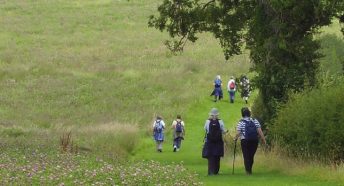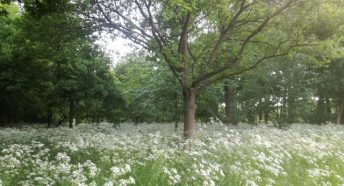EDP letter – response to a Green Belt for Norwich
Printed in the Eastern Daily Press (EDP) on Tuesday 11th July 2023, Chris Dady from CPRE Norfolk responds to an earlier article* where a call for a Norwich Green Belt had received a mixed response.
Following the excellent feature about a potential for a ‘Green Belt for Norwich’, the follow up article on 6th July ‘A mixed response to the Green Belt call’ raises various concerns about the proposal. The key questions raised are whether any green space can have a long-term future, and if it would impact on the supply (and price) of housing as well as the supply of social affordable housing.
All these points are important and can very easily be answered.
When considering whether a series of green wedges would benefit Norwich, CPRE Norfolk mapped all the potential house building land to make sure any proposal would not stand in the way of any ambitions for growth. If the idea was adopted, whilst Norwich is the only urban area in the county that could obtain the protection of green belt legislation, it would potentially encourage our other large towns to define a green network within their areas using their local plans.
With more record temperatures being reported, the continuing decline in biodiversity, the need to reduce car miles and improve air quality, and space for exercise to improve mental and physical wellbeing, together with a direct benefit in terms of dealing with green space deprivation within the city, a green network in the view of CPRE Norfolk is not only essential but very long overdue and now should be a priority.
The plan has to initially be created within the Greater Norwich Local Plan, which is why we have put great effort in promoting the idea to all councillors over the past few years. Once this has happened and the plan is adopted, then the key parts of this green network could potentially be further protected under ‘green belt’ legislation. This would give these green corridors a long-term future, allowing them to be developed for cycling, walking and wildlife. They would then have the strongest possible protection from being turned into any kind of industrial area as suggested.
The necessary links between the wedges and communities would remain defined within the local plan, which would allow them to be subject to review from time to time as plans may need to change.
The Green Belt wedges do not impact on housing growth.
Within the Greater Norwich area there are already over 30000 granted planning consents for houses to be built, and even if these were to be built at a rate of 2000 a year we already have a 15 year housing supply. By planning the wedges and network of links properly, then they would not impact on future growth over and above this existing supply.
Developers have said they prefer to build out sites with a ‘green’ element over all others, and in fact the proposal would increase the attractiveness of a number of sites so may actually encourage building.
Because it is not a restrictive belt around Norwich, the proposal is of benefit to the whole of Greater Norwich and hence overall does not inflate house prices in any area.
The Green Belt and the supply of social affordable rented houses.
The very important question is raised about the supply of social affordable rented houses. The green wedge proposal has no bearing on this supply as I can explain.
Successive governments have stopped the programme of council house building at scale, have moved the supply of this housing onto the private market development sector, and moreover have sold many houses under the ‘right to buy’ scheme. This has halved the supply of social rented housing from 4m in 1980 to 2m today, creating a large private rented sector at full market rents.
Social rented housing is now primarily built (and below target levels) when market housing is being constructed. Market housing is only developed when it can be sold at the prices developers require.
So we now face a many edged sword.
The cost of living crisis has slowed the housing market so we will only see houses built in small numbers, drying up the supply of affordable houses (other than those that can be constructed by housing associations or councils, which are still subject to ‘right to buy’).
At the same time the demand for affordable rental properties will increase for a number of reasons – more young people continue to leave home and need somewhere to live, mortgage rate increases are forcing people to sell and move to rented property and proposed legislation to improve the security of tenants is causing a move by private landlords to withdraw their houses from the sector (as they are concerned that they will not be able to realise their capital investment as planned).
This is why we have a housing crisis, and this is why the green belt proposed does not impact in any way on this critically needed supply of social affordable rented housing.
I hope that this addresses the concerns raised, and all councils relook at a proposal that will improve our existing and new developments, directly benefiting communities’ health, our diminishing wildlife, and our air quality, with our councils leaving a real legacy for the future.
(An edited version of this response was printed in the EDP)
*Ref: ‘Desperate need for housing’: Mixed response to green belt call, EDP Main edition, page 12, 6th July 2023









